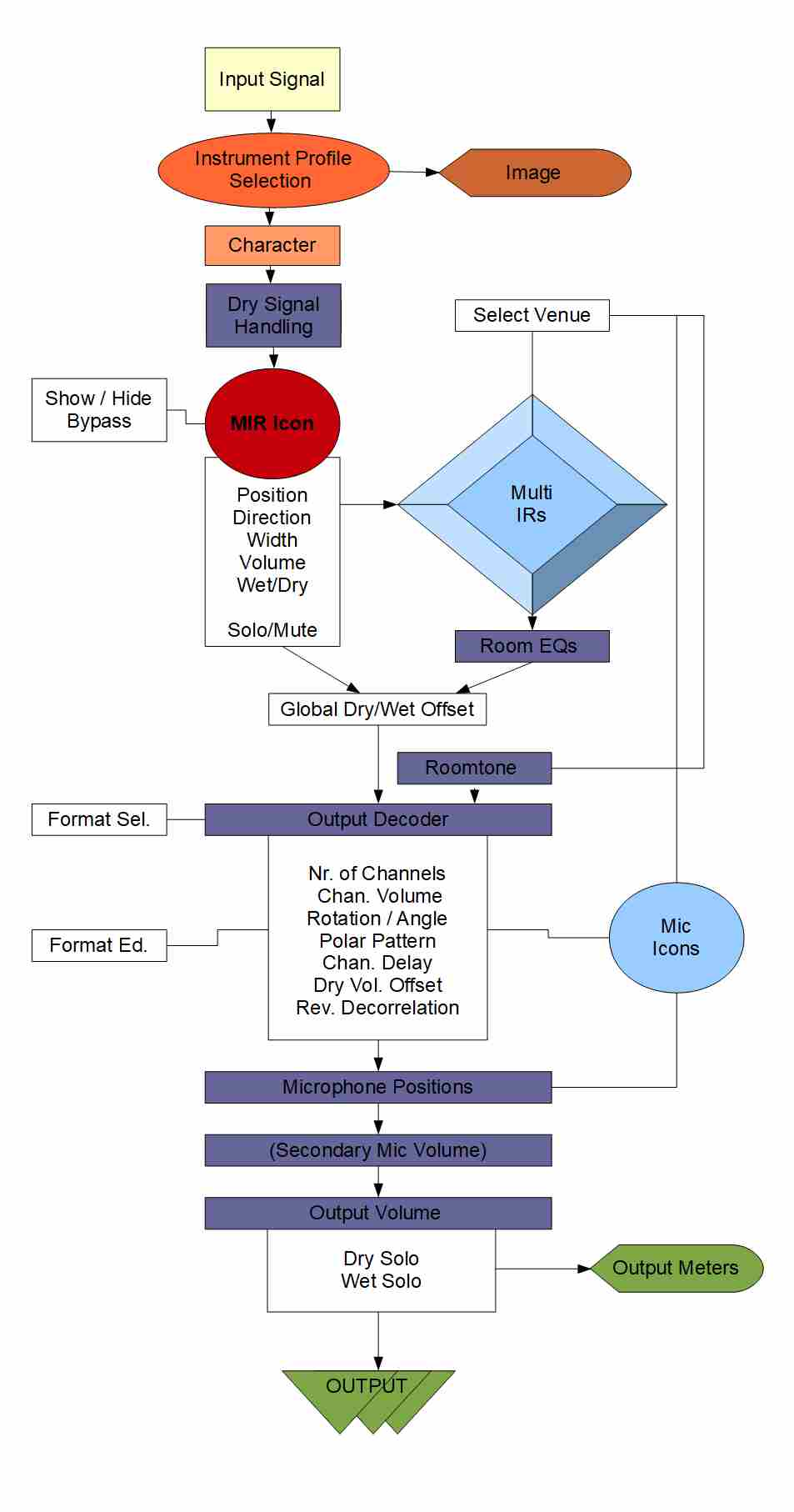Hi all
I'm looking for someone who can educate my about the signal flow of dry and wet signals through MIR Pro, especially in regards to the instrument's "dry/wet" and the output's "dry/wet offset" faders. I understand that the insrument's "dry/wet" fader is basically a simple crossfade between the dry and the wet signal as long as the output's "dry/wet offset" is at 0% (cneter position). But I just can't wrap my head around the behaviour of the two faders in conjunction - espcially because I get a completely dry signal when the "dry/wet offset" is at -100%, even if the instrument's "dry/wet" is at 100% wet. If this was just a series of two crossfades, then that should give me silence, right?
I'd be very grateful for a thurrow explanatino or even a scematic ofthe sigal flow.
All the best and thanks in advance
Sandrew
